
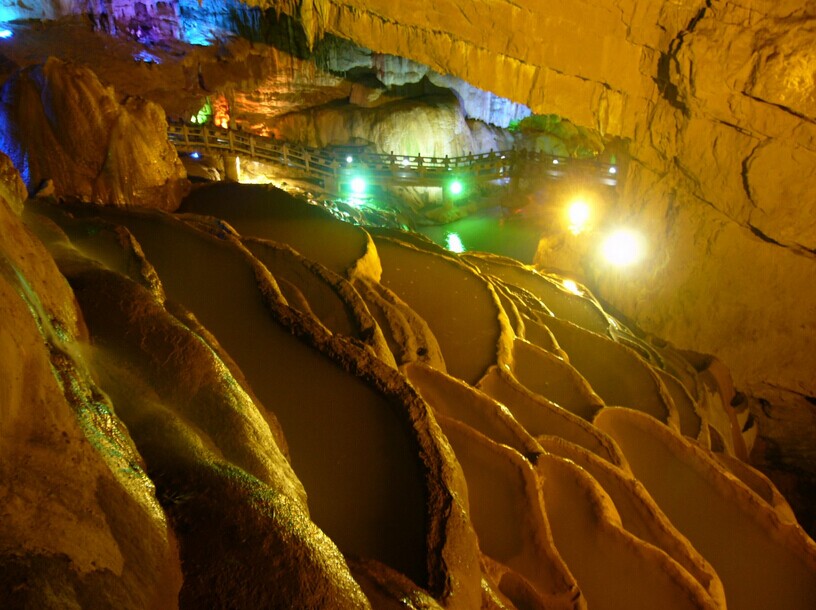
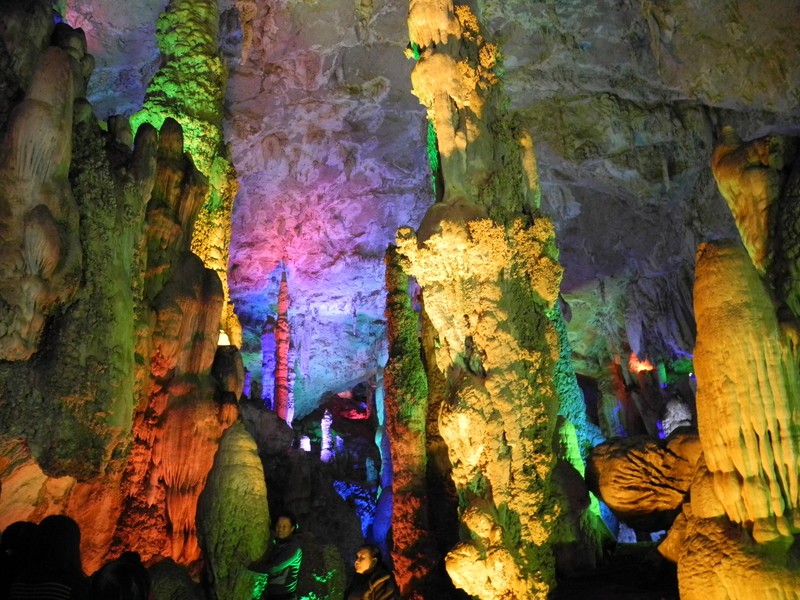
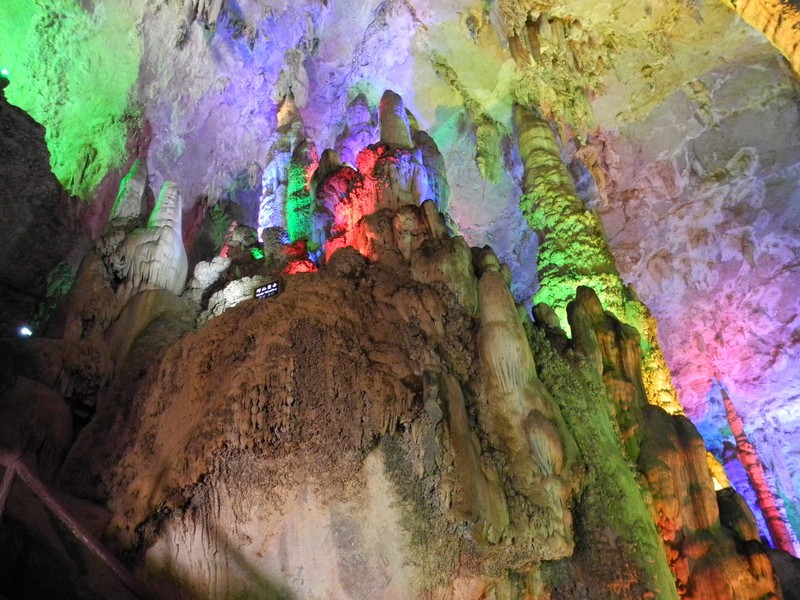
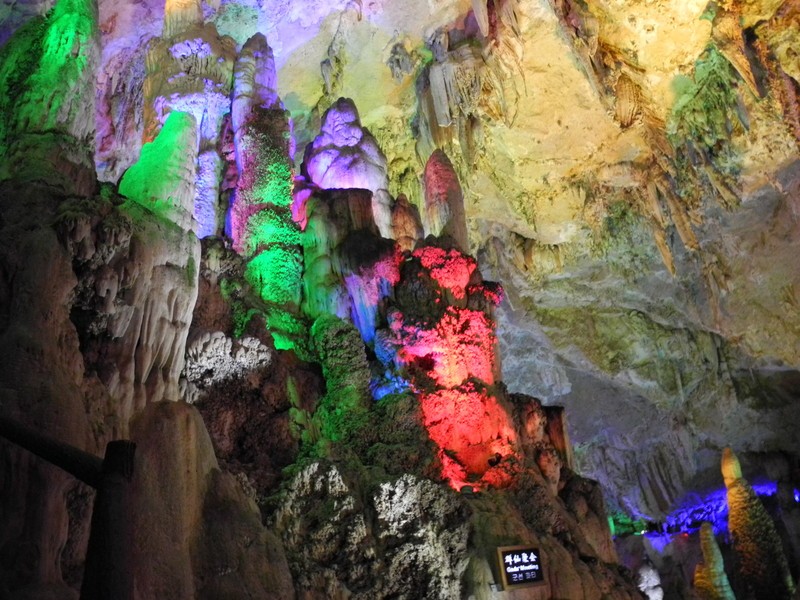
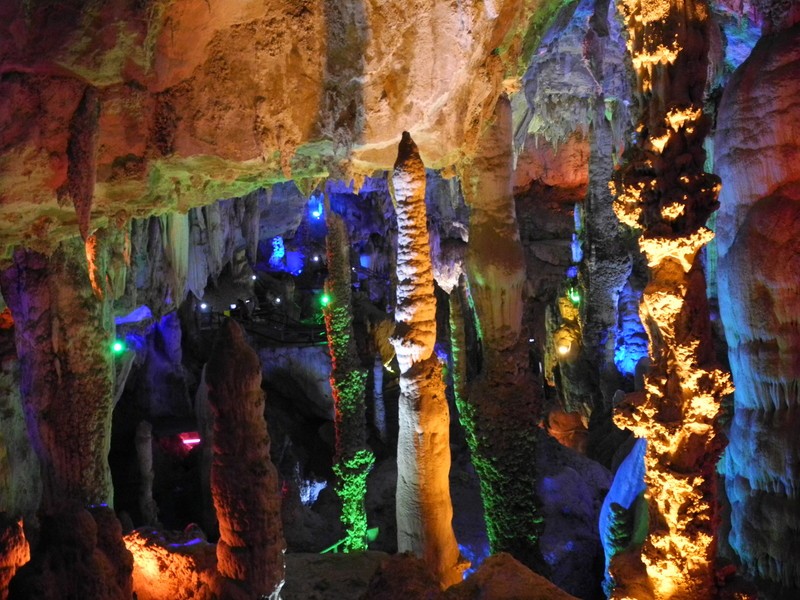
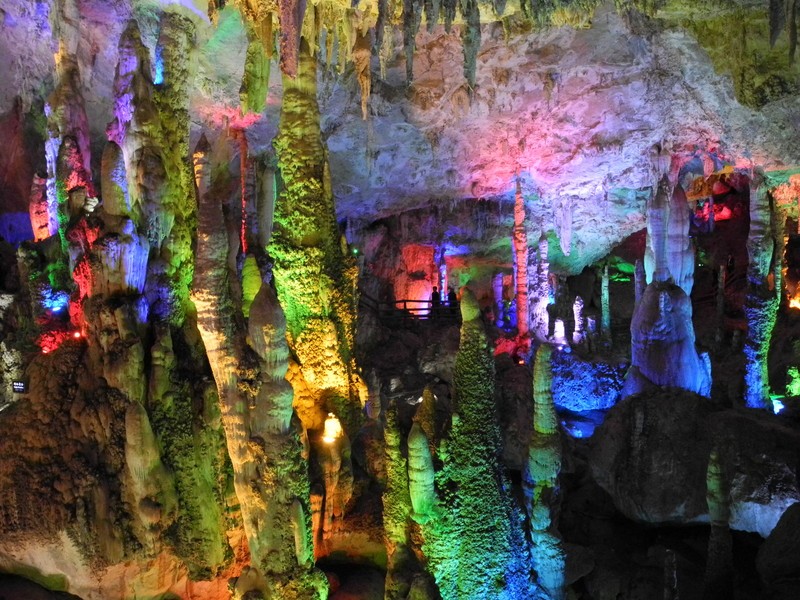
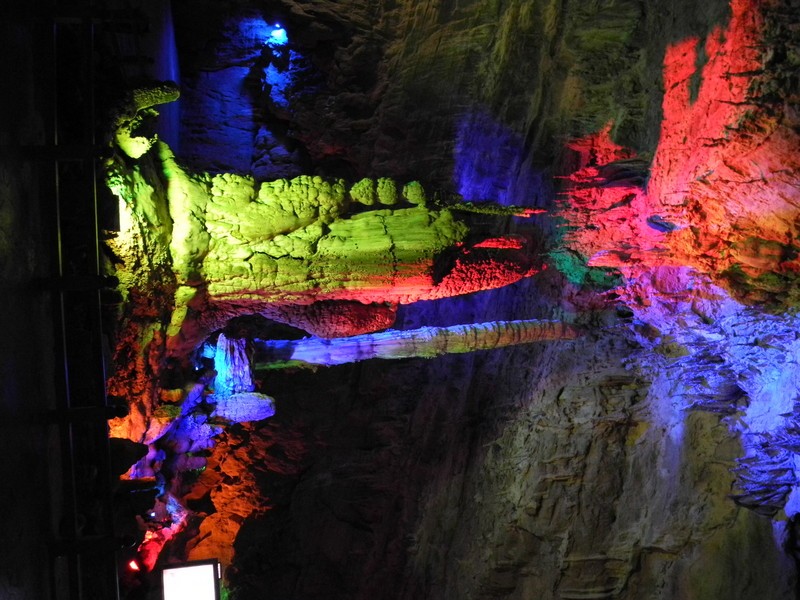
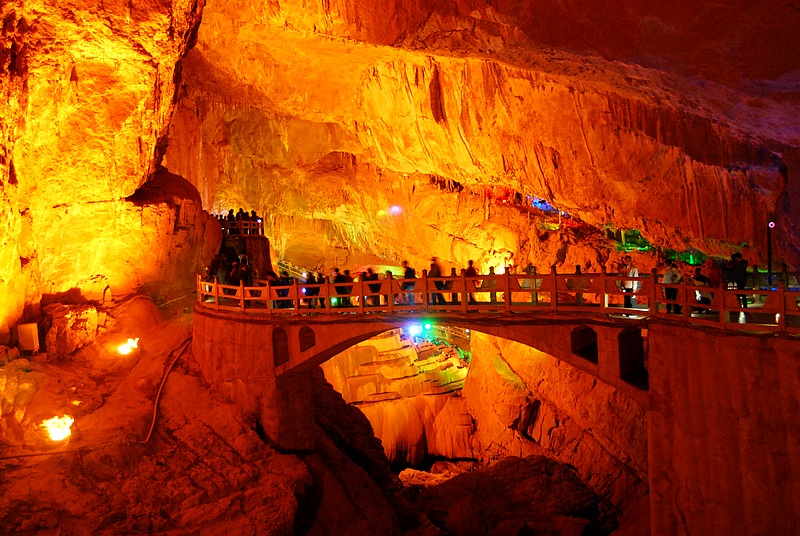
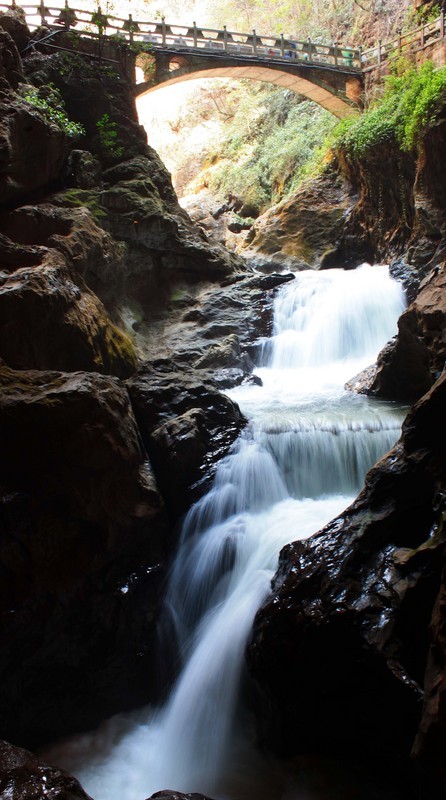
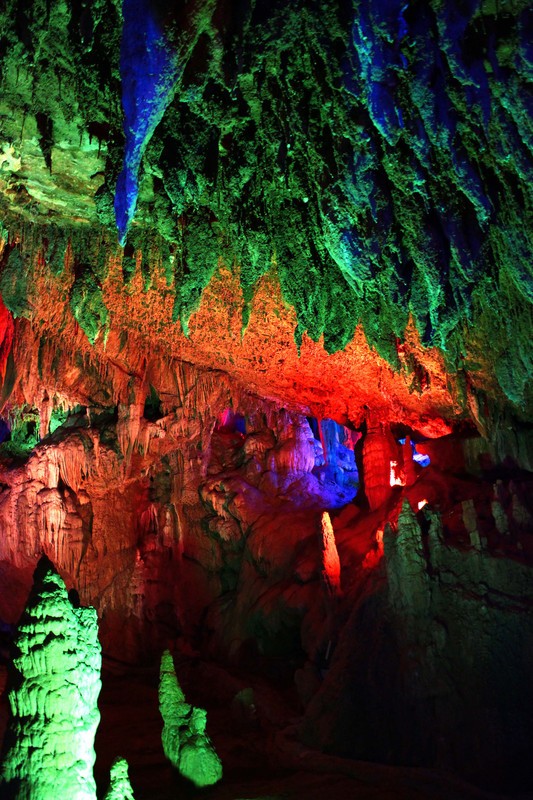
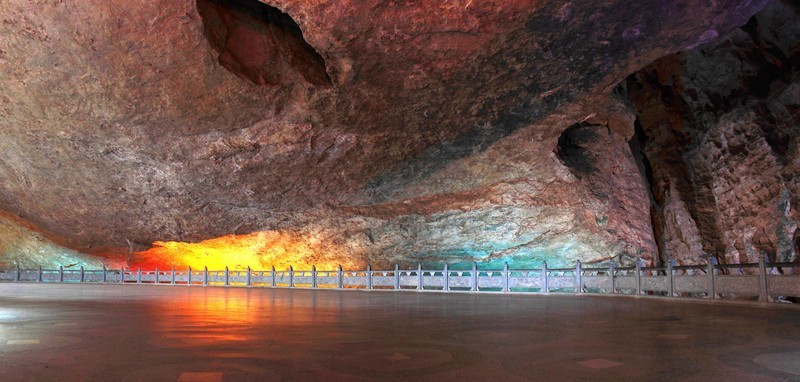
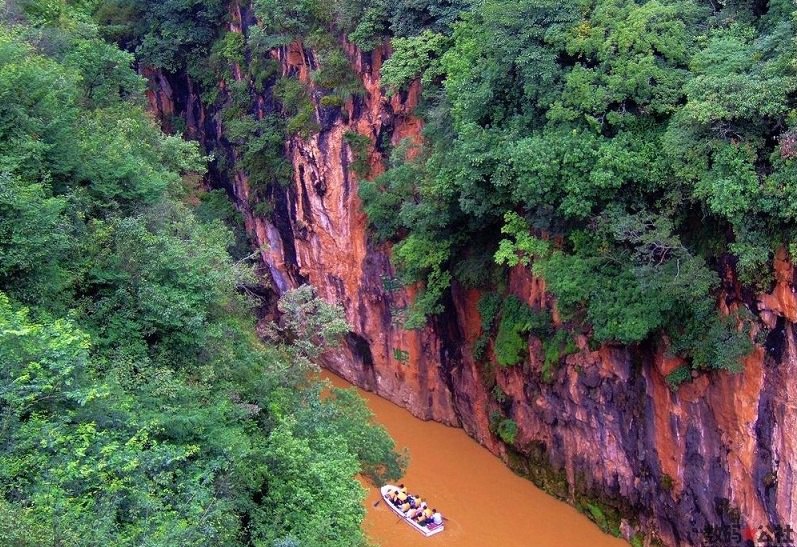
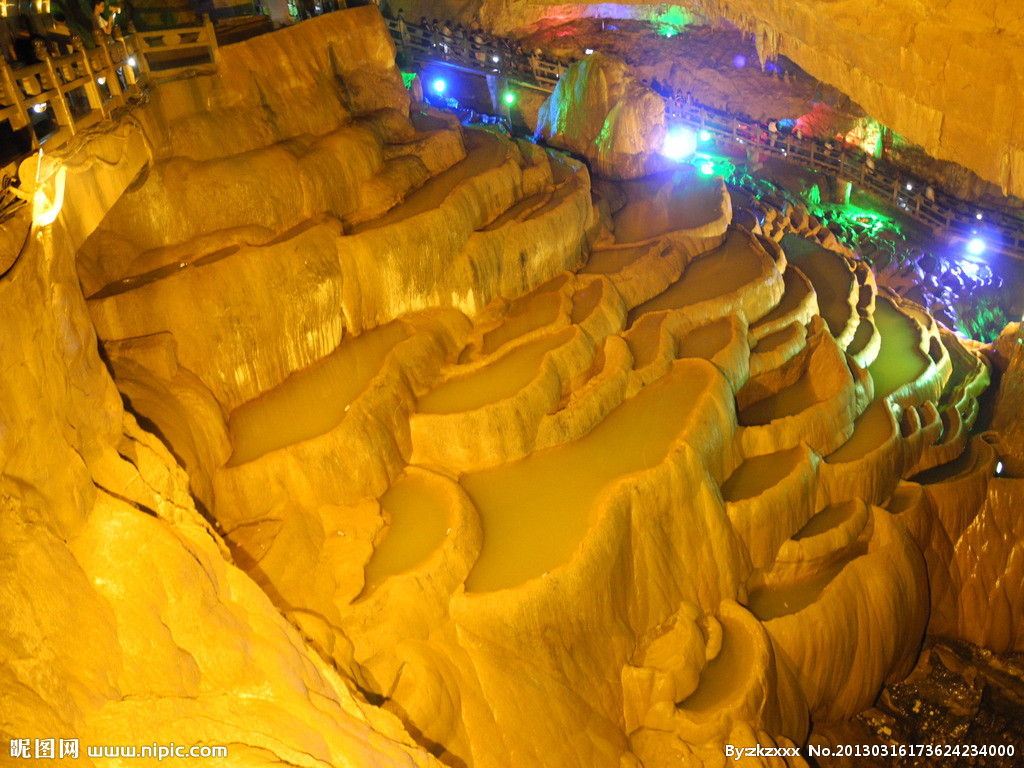
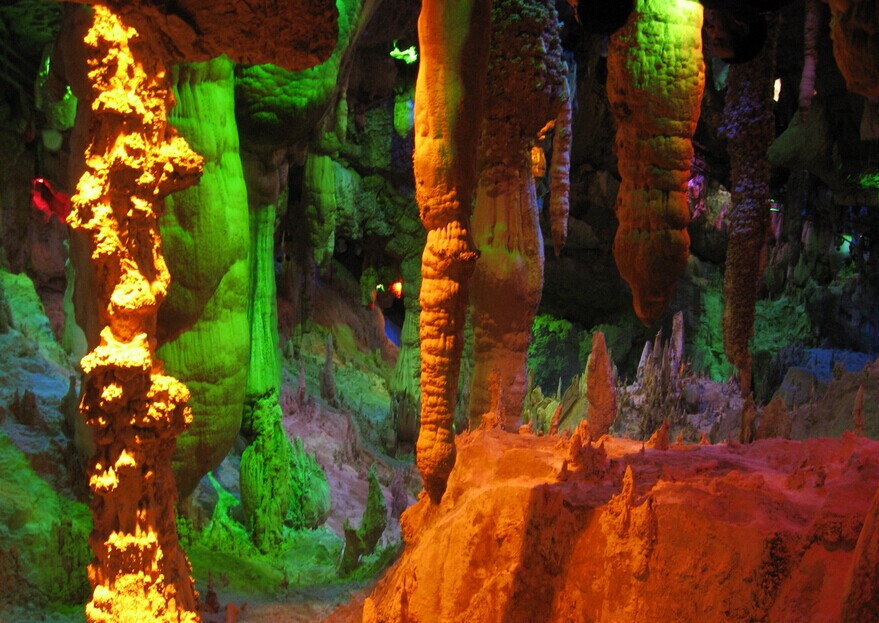
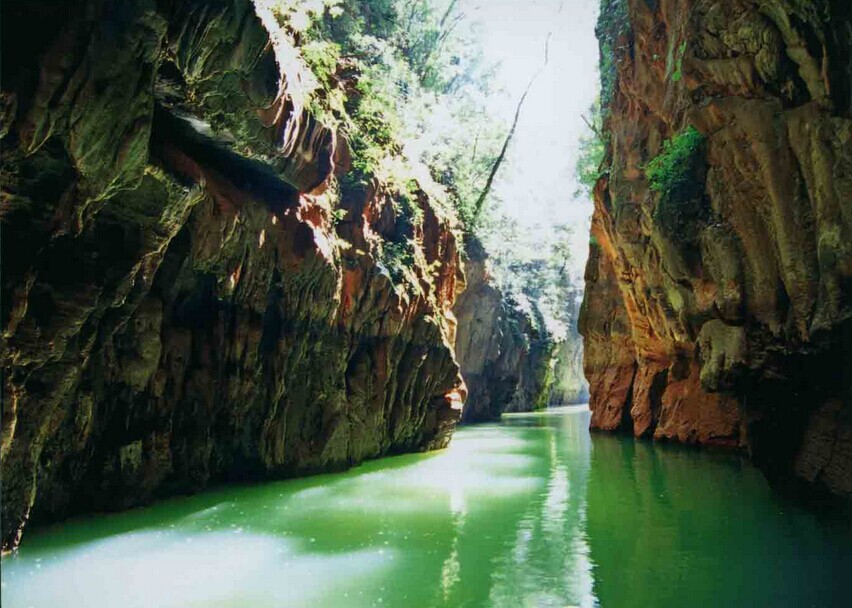

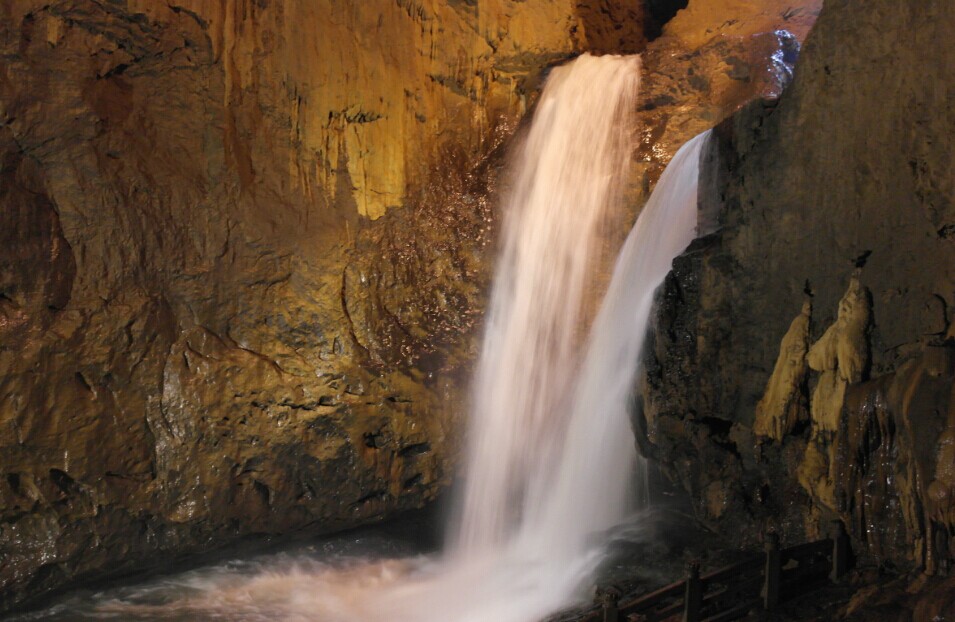
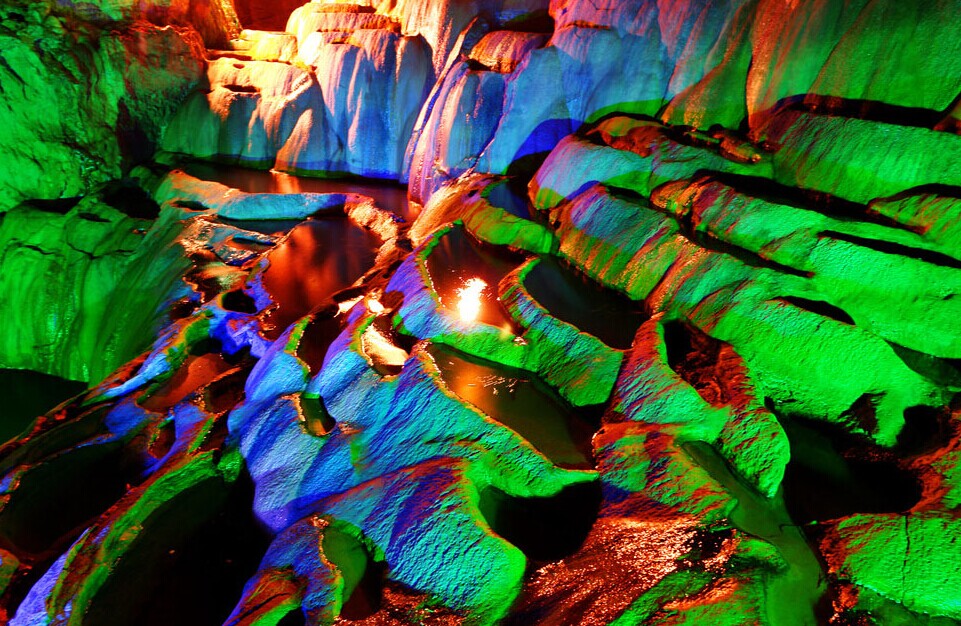
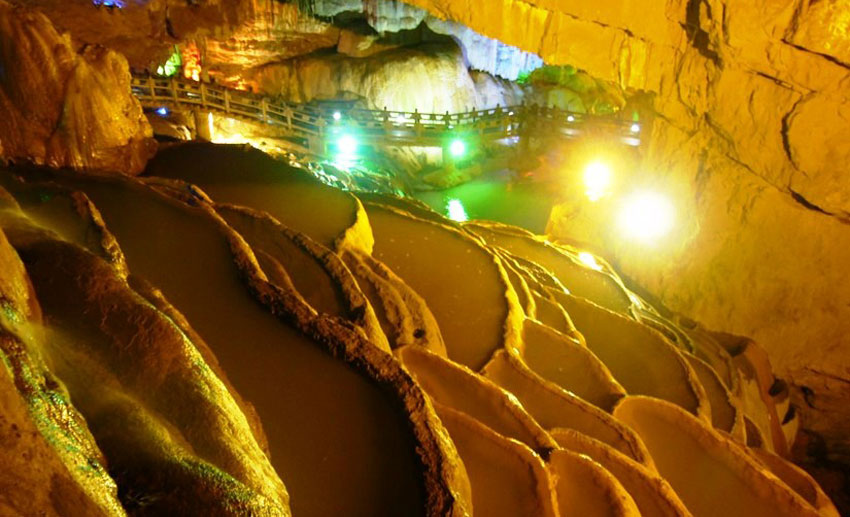
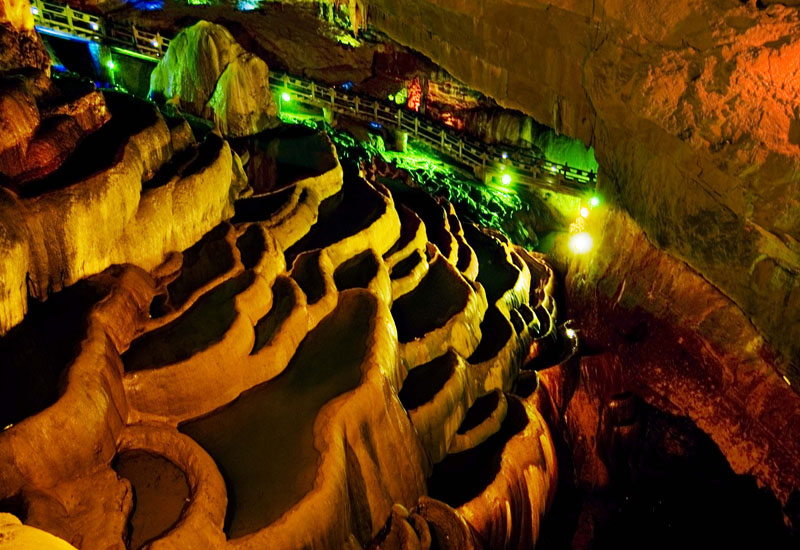


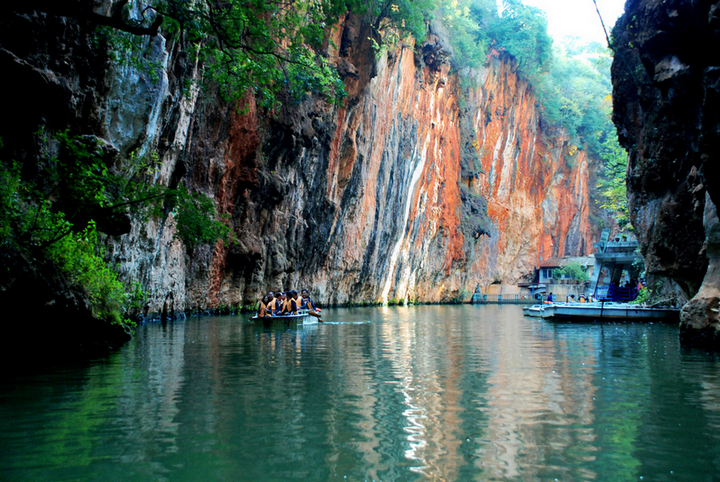
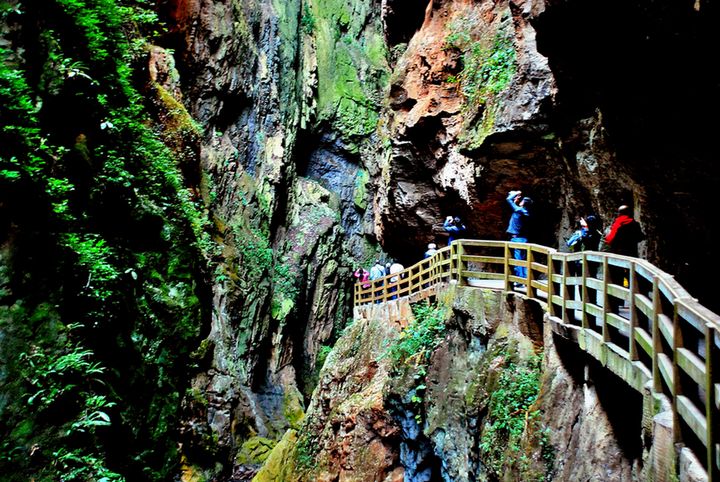
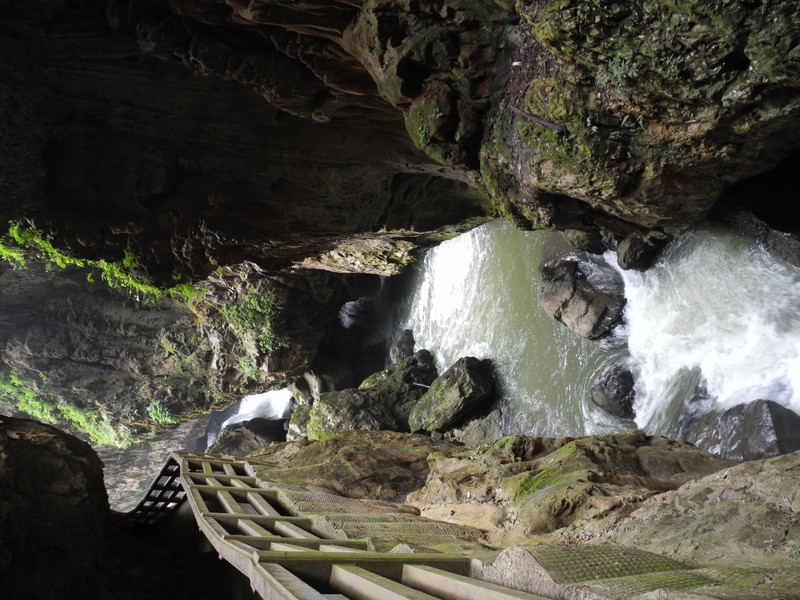
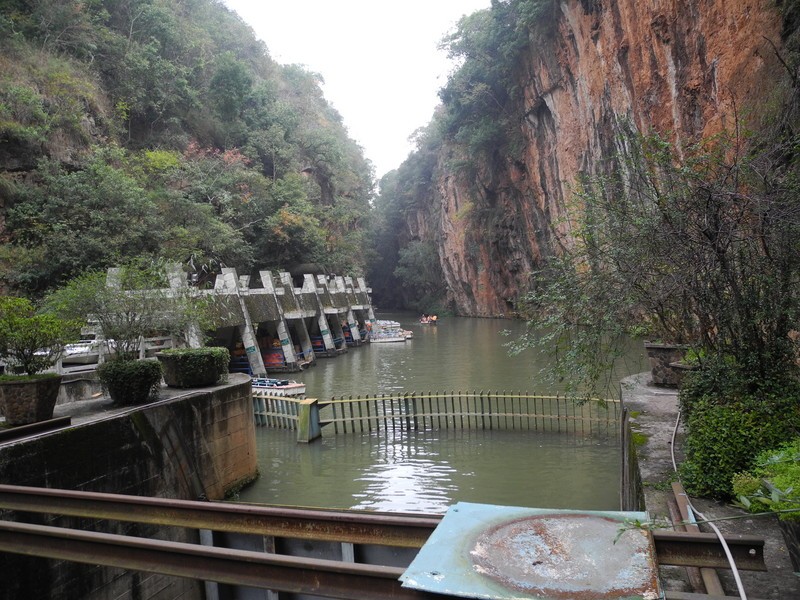
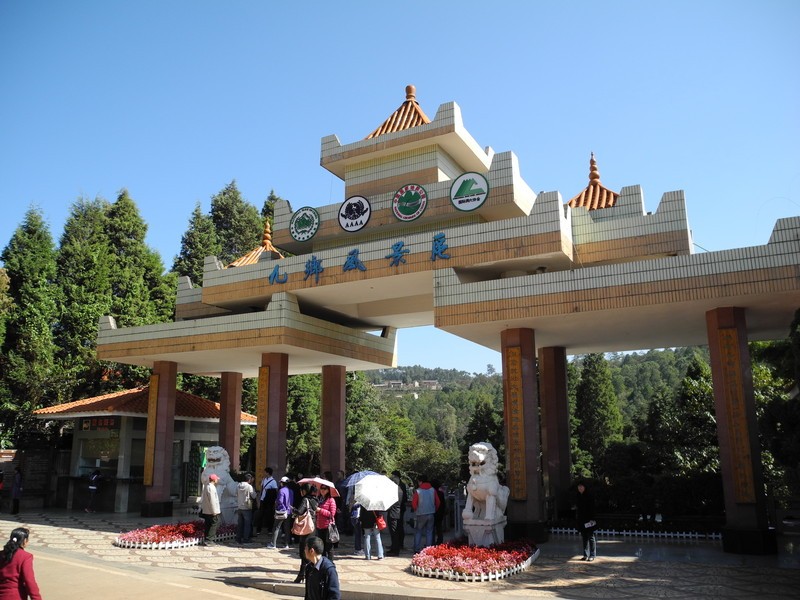
Jiuxiang Scenic Spot is 20 sq km in area and includes 5 tourist attractions, Diehong Bridge (5 km southeast from Jiuxiang Street, famous for the karst caves, the twin waterfalls and the huge natural stone dam cluster), Dasha Dam (consisting of picturesque karst caves and thick forest), Sanjiao Cave (5 km north of Jiuxiang Street, famous for the karst caves), Alu Long [a scenic area 6 km west of Jiuxiang Street, famous for the excavated Yi Nationality cliff paintings of Qin 221BC-206BC) and Han (206BC-220AD) dynasties] and Mingyue (meaning the bright moon) Lake.
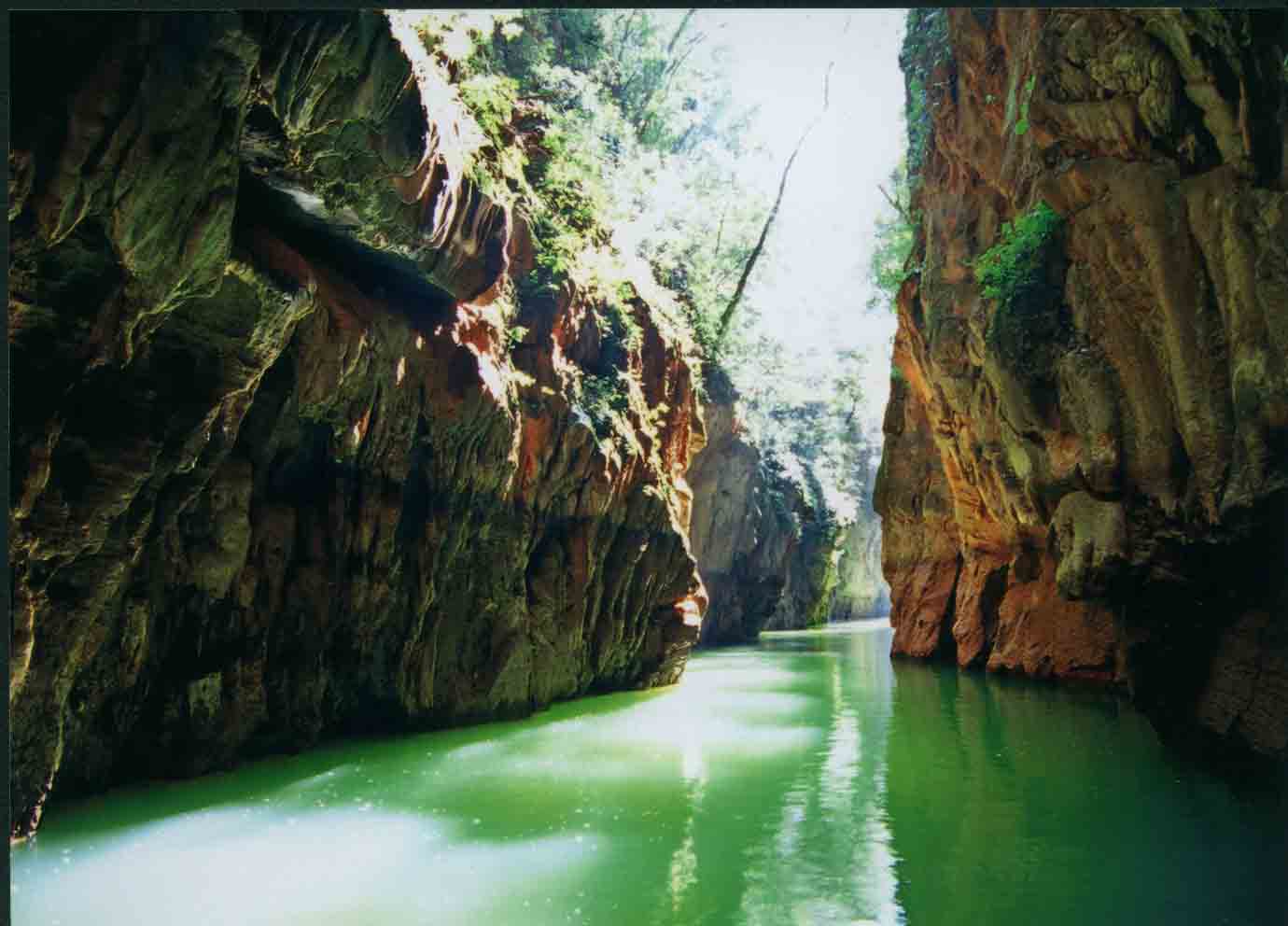
Jiuxiang is known as the "museum of karst caves", which boasts its caves as the largest in scale and number (there are about a hundred karst caves) and has the most wonderful in-cave scenes in China. The caves in Jiuxiang fall into 4 cave clusters: Sanjiao Cave, Dashang Cave, Diehong Cave and Dasha Dam Cave. 66 out of the numerous caves in the area are profitably exploitable and the karst cave cluster is the largest of its kind on Yunnan-Guizhou plateau. The caves in the area are praised for their grandeur, wonder grotesquerie and natural beauty.
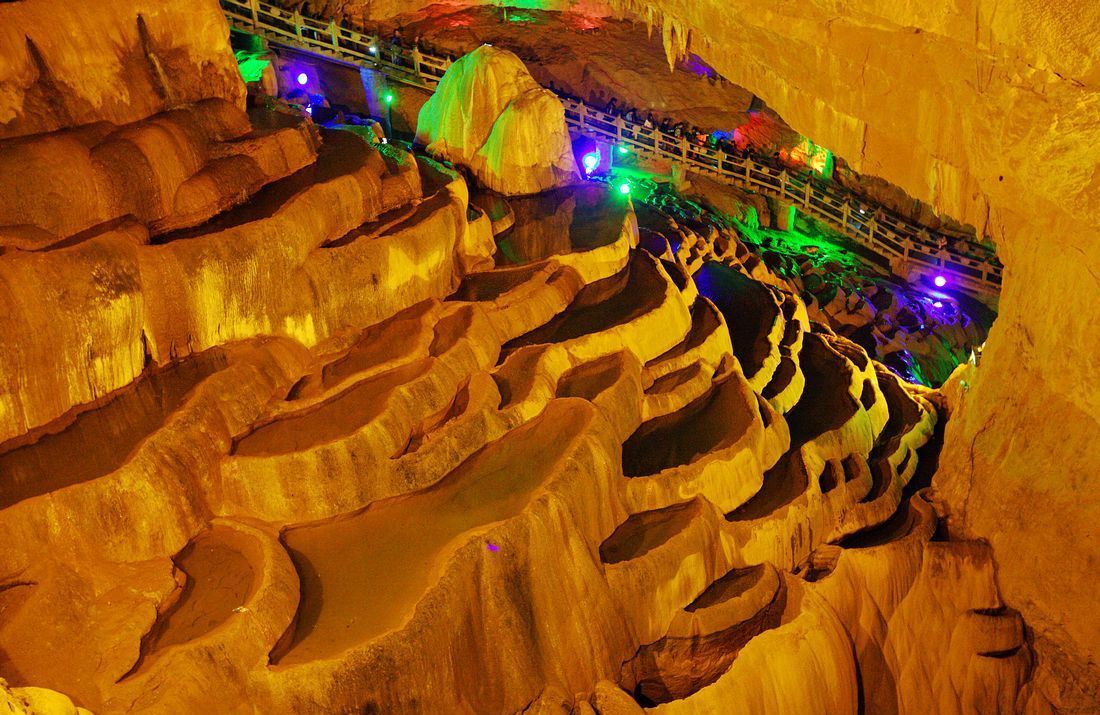
Jiuxiang, the birthplace of the aboriginal Yi ethnic people, has a strong minority custom color, a long cultural history, and widely spread old myths and tales. These include Hunting Festival, the Worship the White Dragon Festival, Love Song Contest, Bullfighting, Wrestling, Sanxian Dance (Sanxian is a three-stringed plucked instrument), Rattle Stick Dance and so on.

Tourists should take enough clothes since they may get wet in boats when they visit the karst caves and the gorges. The folk songs and dances and the local food are also special. What's more, Yangzonghai Lake Scenic Spot and Little White Dragon Forest Park are not far from Jiuxiang Scenic Spot. Tourists can take buses at the gate of the Jiuxiang to go there.
Admission Fee:¥0

You will only receive emails that you permitted upon submission and your email address will never be shared with any third parties without your express permission.
